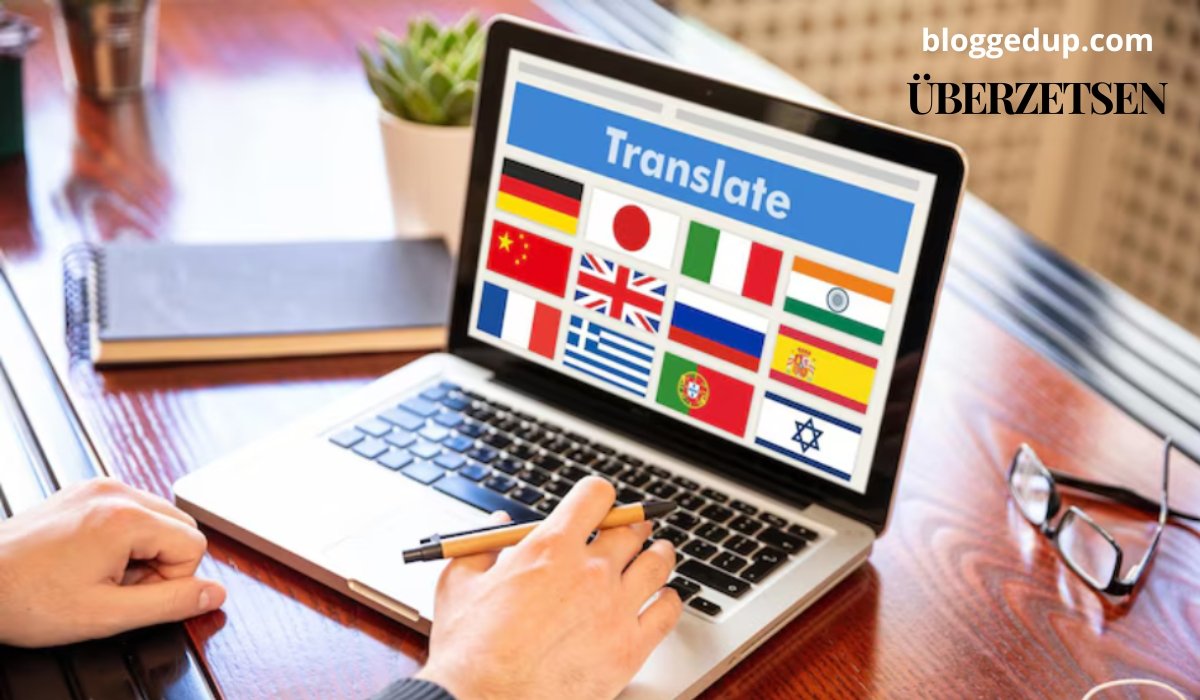Introduction to “Überzetsen”
Introduction
It is more important than ever to be able to interpret and translate languages effectively in an increasingly interconnected world. Translation is the process of communicating meaning, context, and cultural quirks in addition to word conversions between languages. The German word “überzetsen” is one that captures this complex procedure.
Definition of “Überzetsen”
The term “überzetsen” is the German word for “to translate.” It encompasses more than just the literal act of changing words from one language to another. It involves understanding the source text’s meaning and context and accurately rendering it in the target language.
Importance in Translation and Language Interpretation
Understanding the concept of “überzetsen” is essential for anyone involved in translation or language interpretation. It highlights the importance of not only linguistic skills but also cultural knowledge and sensitivity. Accurate translation can bridge communication gaps, foster cross-cultural understanding, and facilitate international collaboration.
What Does “Überzetsen” Mean?
Literal Translation of the Term
The word “überzetsen” comes from the German language. Literally, it means “to set over” or “to transfer.” This literal meaning reflects the process of moving meaning from one language to another.
Explanation of the Translation Process
Translation is a complex process that involves more than just replacing words. It requires a deep understanding of both the source and target languages, including their grammar, syntax, and idiomatic expressions. A translator must also consider the cultural context of the text to ensure that the translated message is accurate and appropriate.
Importance of Understanding “Überzetsen”
Relevance in a Globalized World
In our globalized world, effective communication across languages is vital. Whether it’s for business, travel, or personal connections, understanding and being understood in different languages can open up numerous opportunities. Translation plays a key role in breaking down language barriers and facilitating global interactions.
Applications in Reading, Translation Apps, and International Business
From reading foreign literature to using translation apps for travel, and from conducting international business to fostering diplomatic relations, the applications of translation are vast. Understanding the nuances of “überzetsen” can enhance these experiences and ensure effective communication across cultures.
Historical Context of “Überzetsen”
Origins and Etymology
The term “überzetsen” has its roots in the German language. The prefix “über-” means “over” or “across,” and “setzen” means “to set” or “to place.” Together, they convey the idea of transferring or moving something across a boundary, which is a fitting metaphor for the translation process.
Breakdown of the Term in German
In German, the term can be broken down as follows:
- “Über-”: over, across
- “Setzen”: to set, to place
This breakdown highlights the concept of moving meaning from one language to another, ensuring that the message is accurately conveyed.
Historical Significance in Cross-Cultural Communication
Throughout history, translation has played a crucial role in cross-cultural communication. From ancient texts and religious scriptures to modern literature and scientific research, translation has allowed knowledge and ideas to be shared across linguistic and cultural boundaries.
Evolution Over Time
Development from Ancient to Modern Translation Practices
Translation practices have evolved significantly over time. In ancient times, translation was often done by scholars who were fluent in multiple languages. With the advent of the printing press and the spread of literacy, translation became more widespread and accessible. Today, advancements in technology have further transformed translation practices.
Impact of Technological Advancements
Technological advancements, such as the development of translation software and machine learning algorithms, have revolutionized the field of translation. While these tools have made translation faster and more efficient, they also highlight the importance of human oversight to ensure accuracy and cultural appropriateness.
Different Contexts of “Überzetsen”
Linguistic Translation
Literal vs. Figurative Translation
One of the key challenges in translation is deciding when to translate words literally and when to use a more figurative approach. Literal translation can sometimes lead to awkward or nonsensical phrases, while figurative translation requires a deep understanding of both languages to ensure that the intended meaning is conveyed.
Challenges in Translating Idiomatic Expressions, Slang, and Cultural References
Translating idiomatic expressions, slang, and cultural references can be particularly challenging. These elements often carry specific meanings and connotations that may not have direct equivalents in the target language. A skilled translator must find ways to convey the intended meaning while maintaining the original text’s tone and style.
Cultural Implications
Importance of Preserving Cultural Nuances
Preserving cultural nuances is essential for effective translation. Language is deeply intertwined with culture, and a translation that ignores cultural context can lead to misunderstandings or even offense. A good translator must be sensitive to cultural differences and strive to convey the original text’s meaning and spirit.
Impact on Effective Communication and Cross-Cultural Collaboration
Effective communication across cultures requires more than just linguistic accuracy. It requires an understanding of cultural norms, values, and expectations. Translation that preserves cultural nuances can facilitate cross-cultural collaboration and foster mutual understanding and respect.
Practical Applications of “Überzetsen”
In Literature
Role in Translating Fiction, Poetry, and Non-Fiction
Translation plays a crucial role in making literature accessible to a global audience. Whether it’s fiction, poetry, or non-fiction, a good translation can capture the essence of the original text and bring it to life for readers in a different language.
Balancing Faithfulness to the Original Text with Creative Adaptation
Translators often face the challenge of balancing faithfulness to the original text with creative adaptation. While it’s important to preserve the author’s voice and intent, some degree of adaptation may be necessary to make the text resonate with readers in the target language.
In Technology
Role of Translation Software and Apps
Translation software and apps have made it easier for people to communicate across languages. These tools use complex algorithms to analyze and translate text, making them invaluable for travelers, businesses, and individuals seeking to learn new languages.
Advancements in Machine Learning and AI for Translation
Advancements in machine learning and artificial intelligence have significantly improved the accuracy and efficiency of translation tools. These technologies can analyze vast amounts of data and learn from patterns, allowing them to produce more accurate and nuanced translations.
In Business
Importance for Global Market Expansion
In the business world, accurate translation is essential for global market expansion. Companies need to communicate effectively with customers, partners, and employees in different countries. This requires not only linguistic skills but also an understanding of local cultures and business practices.
Facilitating International Collaboration
Translation also plays a key role in facilitating international collaboration. Whether it’s negotiating contracts, conducting meetings, or sharing research and development findings, effective translation can ensure that all parties understand each other and work together effectively.
The Art and Science of Translation
Skills Required for Effective Translation
Language Fluency, Writing Skills, Cultural Knowledge, and Research Abilities
Effective translation requires a combination of skills. Language fluency is, of course, essential, but so are strong writing skills and cultural knowledge. A good translator must also be able to conduct research to ensure that their translations are accurate and contextually appropriate.
Tools and Resources for Translators
Use of Dictionaries, Thesauri, Translation Software, and Professional Networks
Translators have a range of tools and resources at their disposal. Dictionaries and thesauri can help with finding the right words, while translation software can assist with more complex tasks. Professional networks can provide support and guidance, as well as opportunities for collaboration and professional development.
Common Mistakes in Translation
Misinterpretation of Meaning
One of the most common mistakes in translation is misinterpreting the meaning of the source text. This can result in translations that are inaccurate or misleading, which can have serious consequences, especially in fields like law, medicine, and business.
Consequences of Inaccurate Translations
Inaccurate translations can lead to misunderstandings, errors, and even legal issues. For example, a mistranslation in a contract could lead to disputes between parties, while a mistranslation in medical instructions could put patients’ health at risk.
Ignoring Cultural Context
Risks of Culturally Inappropriate Translations
Ignoring cultural context can result in translations that are culturally inappropriate or offensive. This can damage relationships and reputations and hinder effective communication. A good translator must be aware of cultural differences and strive to ensure that their translations are culturally sensitive.
Over-Reliance on Technology
Importance of Human Oversight
While translation technology can be incredibly useful, it’s important not to rely on it too heavily. Machines can make mistakes and may not always understand the nuances of language and culture. Human oversight is essential to ensure that translations are accurate and appropriate.
How to Improve Translation Skills
Continuous Learning
To be an effective translator, it’s important to engage in continuous learning. This means keeping up with changes in language and culture, as well as staying informed about new translation tools and techniques.
Practical Experience
Gaining practical experience is also crucial. Working on a variety of translation projects can help build skills and confidence. It’s also a great way to learn from mistakes and improve over time.
Utilizing Feedback
Importance of Constructive Feedback for Improvement
Receiving and utilizing feedback is essential for improving translation skills. Constructive feedback can highlight areas for improvement and provide valuable insights into how to produce better translations.
YOU MAY ALSO LIKE
Discovering Käätjä The Delicious Tradition That Bridges Cultures
Conclusion
Summary of the Complexity and Importance of Translation
The process of translation is intricate and multidimensional, requiring a blend of technological instruments, language expertise, and cultural understanding. In today’s worldwide society, it is essential for promoting understanding and communication.
Future Significance of Skilled Translators in a Globalized World
As our world becomes increasingly interconnected, the demand for skilled translators will continue to grow. These professionals will play
FAQs
- What does “überzetsen” mean in German?
- “Überzetsen” means “to translate” in German, referring to the process of converting text or speech from one language to another.
- Why is understanding cultural context important in translation?
- Understanding cultural context ensures that translations are accurate, culturally appropriate, and prevent misunderstandings or offense.
- How has technology impacted translation?
- Technology, including translation software and AI, has made translation faster and more efficient but still requires human oversight for accuracy.
- What skills are essential for effective translation?
- Effective translation requires language fluency, strong writing skills, cultural knowledge, and research abilities.
- What are common mistakes in translation?
- Common mistakes include misinterpreting meaning, ignoring cultural context, and over-relying on technology without human oversight.










